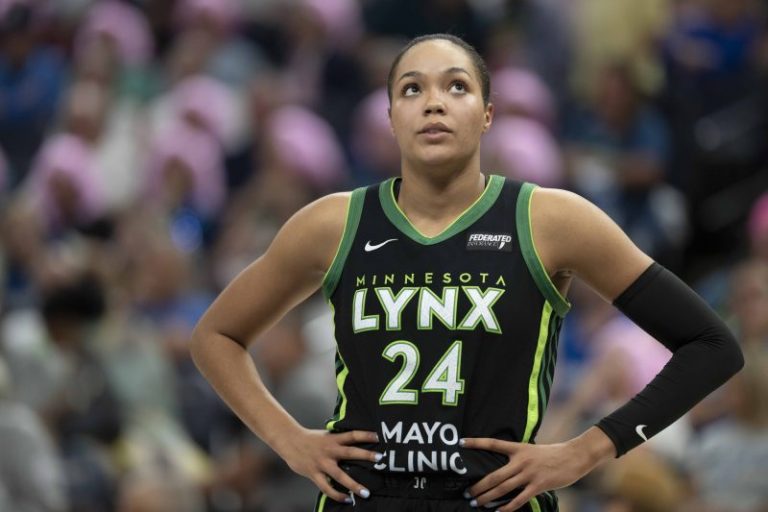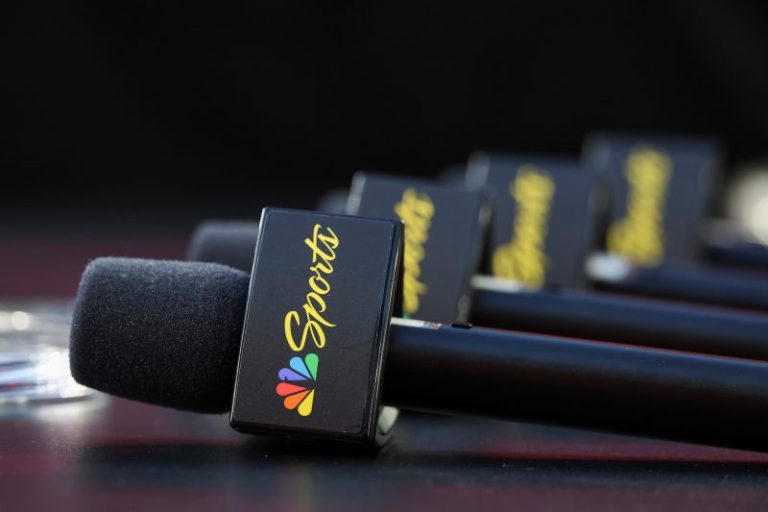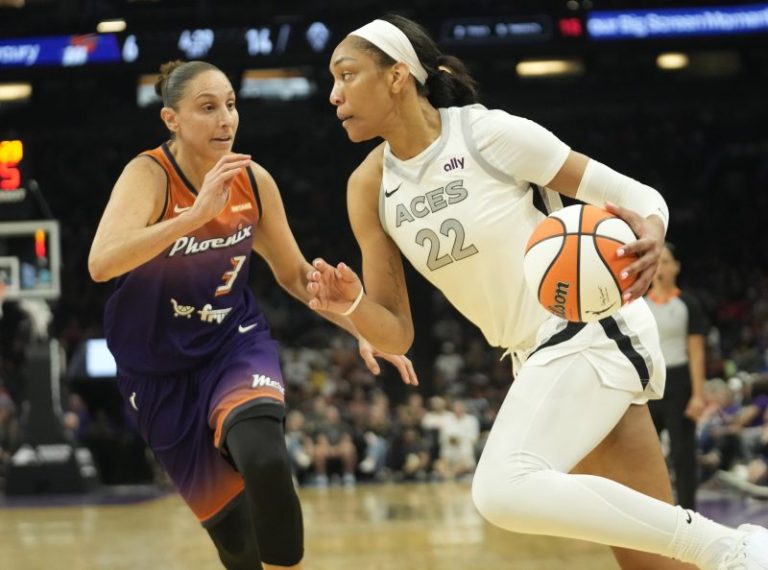Who has the best MVP season or seasons in the history of the WNBA?
USA TODAY is trying to answer that question by ranking the 16 players who have been named MVP since the league began in 1997. From Cynthia Cooper, who was part of the league’s first dynasty with the Houston Comets, to A’ja Wilson, who is a part of the latest super team, we take a look at the women who built the W.
As for No. 1, you’ll have to scroll down to find out the answer. But, here’s a hint: She and her team are playing in their third WNBA Finals in four years and are within two victories of a third championship.
The WNBA Finals continue on Wednesday with Game 3 (8 p.m. ET, ESPN) at Mortgage Matchup Center in Phoenix. The Aces hold a 2-0 lead in the best-of-seven series.
16. Yolanda Griffith, C, Sacramento Monarchs
MVP season: 1999
In her first season in the WNBA after coming over from the ABL, Griffith won both WNBA MVP and Defensive Player of the Year. She averaged 18.8 points, 11.3 rebounds and 2.5 rebounds in her MVP season. Griffith was also named WNBA Finals MVP in 2005, when the Monarchs won the championship.
15. Jonquel Jones, F/C, Connecticut Sun, New York Liberty
MVP season: 2021
Jones helped the Sun to the league’s best record in 2021. They ended the season on a 14-game win streak, the fourth-longest in league history at the time. Jones finished with a league-best 11.2 rebounds per game and a career-high 19.2 points, scoring 20 or more points in 12 of 27 games that season. She became the first player in WNBA history to win MVP, Sixth Woman of the Year and the Most Improved Player awards in her career.
14. Nneka Ogumike, F, Los Angeles Sparks
MVP season: 2016
Ogwumike’s game is rooted in efficiency. She was named MVP after recording a 73.7% true shooting percentage — a record for NBA and WNBA players — which combines field-goal, 3-point and free throw percentages. The mark stands nearly a decade later. Ogwumike’s resume also includes No. 1 overall pick, WNBA champion, Rookie of the Year, All-WNBA first-team and four-time All-Defensive first-team.
13. Tamika Catchings, F, Indiana Fever
MVP season: 2011
Catchings finished as the WNBA MVP runner-up three seasons, before capturing the coveted award in her 10th season in 2011. One year later, Catchings added a WNBA Finals MVP after leading the Indiana Fever to their only title. The five-time Defensive Player of the Year is the WNBA’s all-time leader in steals by a wide margin and is top 10 in points, rebounds, free throws and minutes played.
12. Tina Charles, C, Connecticut Sun, New York Liberty, Washington Mystics, Phoenix Mercury, Seattle Storm, Atlanta Dream
MVP season: 2012
Charles was named the MVP in 2012 after securing her third consecutive rebounding title. She led the league in rebounds for a fourth time in 2016. The eight-time All-Star became the fastest player in league history to reach 1,100 rebounds, doing it in 100 games. Charles remains the WNBA’s all-time leader in rebounds and double-doubles. She ranks second in points, behind Diana Taurasi.
11. Elena Delle Donne, F/G, Chicago Sky, Washington Mystics
MVP seasons: 2015, 2019
Delle Donne became the first WNBA player to join the 50/40/90 club in 2019, shooting 50% from the field, 40% from the 3 and 90% from the free throw line for the season, a feat nine NBA players have accomplished. Napheesa Collier acheived the feat this season. Delle Donne also led the Washington Mystics to their first title in franchise history in 2019, winning her second league MVP. Her first came in 2015, her third season in the league.
10. Diana Taurasi, G, Phoenix Mercury
MVP season: 2009
Taurasi is one of three guards in league history to win MVP and as one of the greatest shooters ever, it’s the least surprising bit of her resume. A three-time WNBA champion, Taurasi also won Finals MVP twice. She is an 11-time All-Star and five-time scoring champion. Taurasi led the league in points per game (20.4) and made 3-pointers (79) during her her 2009 MVP season.
9. Sylvia Fowles, C, Chicago Sky, Minnesota Lynx
MVP season: 2017
Fowles might be one of the most underrated players on this list and in WNBA history. She’s an eight-time All-Star and four-time Defensive Player of the Year with two titles and a Finals MVP. She also led the league in rebounds three separate seasons. During her MVP season, she was a walking double-double, who led the league in field goal percentage (65.5), total blocks (67) and win shares (9.2).
8. Breanna Stewart, F, Seattle Storm, New York Liberty
MVP seasons: 2018, 2023
Stewart winning MVP twice is impressive enough, but nothing sounds more astounding than the margin of her 2023 win. There were 13 points separating her from A’ja Wilson and Alyssa Thomas, the closest margin in league history. Why was it so hard? Stewart does it all, as evidenced by her three championships and two WNBA Finals MVPs. She is also a seven-time All-Star, six-time WNBA first-team and defensive team pick.
7. Candace Parker, F, Los Angeles Sparks, Chicago Sky
MVP seasons: 2008, 2013
Parker remains the only player in WNBA history to earn Rookie of the Year and MVP in the same season. She averaged 18 points and close to 10 rebounds plus an absurd 2.3 blocks on 52% shooting. She added another MVP five years later because one was not enough. The former Tennesee star even has three WNBA championships and a Finals MVP because everything with her is elite.
6. Maya Moore, F, Minnesota Lynx
MVP season: 2014
Moore has four rings, and if that wasn’t impressive enough, she added five All-WNBA first-team selections and an MVP in eight seasons in the league. During her MVP season, she averaged a blistering 23.9 points on 48% shooting to go with 8.1 rebounds, 3.4 assists and 1.9 steals.
5. Lauren Jackson, F/C, Seattle Storm
MVP seasons: 2003, 2007, 2010
Jackson, who is from Australia, was the first international player to win MVP. A threat at both ends of the court, she led the Seattle Storm to their first two titles. Jackson was absolutely dominant in 2007, when Jackson led the league in rebounding (9.7 per game) and was second in scoring (23.8 ppg) and blocks (2.0 bpg).
4. Lisa Leslie, C, Los Angeles Sparks
MVP seasons: 2001, 2004, 2006
Leslie was first player to dunk in a WNBA game (and a WNBA All-Star game) and first to score 6,000 points. When she retired, Leslie was the league’s career leader in both points and rebounds. A two-time WNBA champion, she also won two Finals MVPs.
3. Sheryl Swoopes, F/G, Houston Comets
MVP seasons: 2000, 2002, 2005
After missing the 2001 season with a torn ACL, Swoopes came back to win MVP and Defensive Player of the Year in 2002. She was in the top three in steals from 1998 to 2003 and was in the top five in both player efficiency and win shares during that span.
2. Cynthia Cooper, G, Houston Comets
MVP seasons: 1997, 1998
Cooper was the anchor of the Houston Comets team that won an unprecedented four consecutive WNBA titles. She led the league in scoring in each of her MVP seasons and was in the top 10 in assists and minutes played. Cooper, who helped USC to a pair of titles in 1983 and 1984, played 11 seasons overseas before the WNBA existed.
1. A’ja Wilson, C Las Vegas Aces
MVP seasons: 2020, 2022, 2024, 2025
Duh. Wilson is not only the W’s first four-time MVP, she joins LeBron James, Wilt Chamberlain, Peyton Manning, Aaron Rodgers, Barry Bonds, Wayne Gretzky, Gordie Howe and Eddie Shore as the only athletes to win four or more MVPs. Wilson is the most dominant player in basketball right now, able to control a game both offensively and defensively. You might be able to slow her, but you cannot stop her.
This post appeared first on USA TODAY










